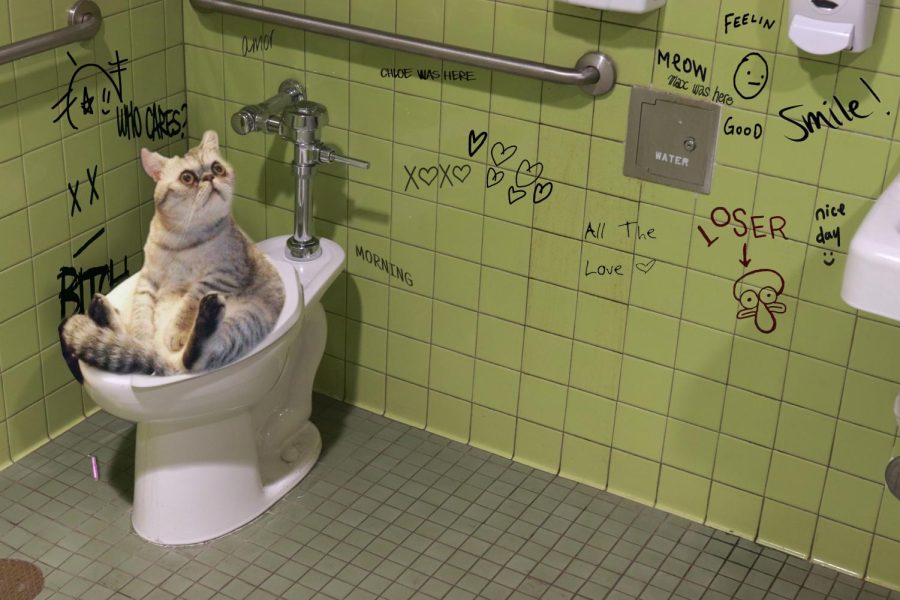Reasons You Should Never Flush Cat Poop Down Your Toilet - Critical Facts
Reasons You Should Never Flush Cat Poop Down Your Toilet - Critical Facts
Blog Article
This article below relating to Can You Flush Cat Poo or Litter Down the Toilet? is indeed remarkable. You should check it out.

Introduction
As feline proprietors, it's necessary to be mindful of just how we throw away our feline close friends' waste. While it might seem hassle-free to flush cat poop down the commode, this method can have detrimental consequences for both the environment and human health.
Environmental Impact
Flushing pet cat poop introduces unsafe pathogens and parasites into the water system, posing a considerable danger to water communities. These impurities can negatively affect aquatic life and compromise water top quality.
Health and wellness Risks
In addition to ecological worries, purging feline waste can likewise position health threats to human beings. Feline feces may consist of Toxoplasma gondii, a parasite that can trigger toxoplasmosis-- a potentially extreme health problem, specifically for expectant females and individuals with weakened body immune systems.
Alternatives to Flushing
Fortunately, there are much safer and much more liable methods to deal with feline poop. Consider the complying with alternatives:
1. Scoop and Dispose in Trash
One of the most typical technique of getting rid of pet cat poop is to scoop it right into a biodegradable bag and toss it in the garbage. Make certain to make use of a committed trash scoop and throw away the waste promptly.
2. Usage Biodegradable Litter
Select biodegradable pet cat litter made from materials such as corn or wheat. These trashes are environmentally friendly and can be securely taken care of in the trash.
3. Hide in the Yard
If you have a yard, consider burying pet cat waste in a marked location away from veggie gardens and water sources. Be sure to dig deep enough to stop contamination of groundwater.
4. Set Up a Pet Waste Disposal System
Invest in an animal waste disposal system specifically developed for cat waste. These systems use enzymes to break down the waste, minimizing odor and ecological influence.
Final thought
Liable pet ownership prolongs past providing food and sanctuary-- it also entails proper waste management. By refraining from purging feline poop down the commode and selecting alternative disposal approaches, we can minimize our ecological impact and shield human wellness.
Why Can’t I Flush Cat Poop?
It Spreads a Parasite
Cats are frequently infected with a parasite called toxoplasma gondii. The parasite causes an infection called toxoplasmosis. It is usually harmless to cats. The parasite only uses cat poop as a host for its eggs. Otherwise, the cat’s immune system usually keeps the infection at low enough levels to maintain its own health. But it does not stop the develop of eggs. These eggs are tiny and surprisingly tough. They may survive for a year before they begin to grow. But that’s the problem.
Our wastewater system is not designed to deal with toxoplasmosis eggs. Instead, most eggs will flush from your toilet into sewers and wastewater management plants. After the sewage is treated for many other harmful things in it, it is typically released into local rivers, lakes, or oceans. Here, the toxoplasmosis eggs can find new hosts, including starfish, crabs, otters, and many other wildlife. For many, this is a significant risk to their health. Toxoplasmosis can also end up infecting water sources that are important for agriculture, which means our deer, pigs, and sheep can get infected too.
Is There Risk to Humans?
There can be a risk to human life from flushing cat poop down the toilet. If you do so, the parasites from your cat’s poop can end up in shellfish, game animals, or livestock. If this meat is then served raw or undercooked, the people who eat it can get sick.
In fact, according to the CDC, 40 million people in the United States are infected with toxoplasma gondii. They get it from exposure to infected seafood, or from some kind of cat poop contamination, like drinking from a stream that is contaminated or touching anything that has come into contact with cat poop. That includes just cleaning a cat litter box.
Most people who get infected with these parasites will not develop any symptoms. However, for pregnant women or for those with compromised immune systems, the parasite can cause severe health problems.
How to Handle Cat Poop
The best way to handle cat poop is actually to clean the box more often. The eggs that the parasite sheds will not become active until one to five days after the cat poops. That means that if you clean daily, you’re much less likely to come into direct contact with infectious eggs.
That said, always dispose of cat poop in the garbage and not down the toilet. Wash your hands before and after you clean the litter box, and bring the bag of poop right outside to your garbage bins.
https://trenchlesssolutionsusa.com/why-cant-i-flush-cat-poop/

We were shown that write-up about How to Dispose of Cat Poop and Litter Without Plastic Bags through an acquaintance on another web blog. Loved our post? Please share it. Let another person find it. Thank-you for your time spent reading it.
Set An Appointment Report this page